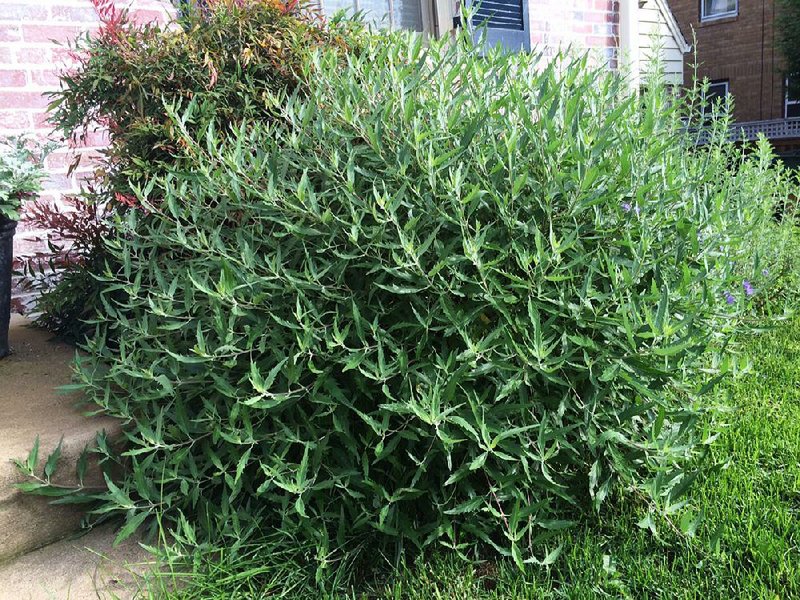For beginners, one of the daunting aspects of creating flower beds is the idea that you have to stake perennials as they grow. You stake vampires. Perennials? This was the standard advice decades ago and driven by the idea that everyone had to have an herbaceous border of lanky perennials, annuals and biennials, that it had to be camera-ready at any moment and that the gardener was free to spend several hours each day grooming and propping up stalks as they grew.
Modern life -- and the modern garden -- doesn't work that way. Today, plants have to take care of themselves, and plant breeders have responded by developing perennials that are more compact, self-supporting and longer-flowering.
One example is the Decadence series of false indigo, which grows to just three feet, about two-thirds the size of the species plant, Baptisia australis. Another is coreopsis or tickseed, a golden-flowered perennial that hybridizers have worked to strengthen by shortening. Phantom is a dwarf variety of joe-pye weed.
This isn't to say that floppy perennials aren't still a problem -- they are, especially in a wet spring. But there is a way to address this with a minimum of work. Simply, the gardener cuts back the wayward plant by one-third to a half before flowering, a technique that produces bushier regrowth from side shoots. This results in more flowers, if slightly smaller ones. The pruning also delays blooming by two or three weeks or longer, which isn't necessarily a negative. Not every perennial is a candidate for this, and you can wreck a season's show if you pick the wrong plant. Generally, perennials that are multistemmed and bloom from midsummer on are ideal subjects.
In Britain, the technique is called the Chelsea Chop because it is done around the time of the famed Chelsea Flower Show, held recently in London.
In my garden, I could see two perennials heading into the red zone on my mental flop-o-meter. One is a large, shrublike plant named the bush clover (Lespedeza thunbergii). It grows to about six feet, and its arching stems are full of small purple blossoms in late summer. But without the chop -- let's call it the Spring Snip -- the bush clover is a splayed beast that prostrates itself before the lawn mower. Cut back now, and it produces a tight fountain of blossoms in September.
The other perennial in need of a chop is the mountain fleece (Persicaria amplexicaulis "Firetail"), which produces crimson bottlebrush blossoms from July until December, but the broad stand collapses without springtime help. (Wheat farmers call this collapse "lodging.")
Both are now about half the mass they were a few days ago. As a matter of routine, I do the same to my Russian sage, or perovskia plants, and to my caryopteris, sometimes called bluebeard. My joe-pye weed gets chopped back, too, by at least a half -- don't cut any of these back to the ground, by the way.
Instead of spending hours neatly trimming with hand pruners, I use a sharp pair of hedge shears. This gets the job done in minutes with fingers away from blades, and while the resulting stubs are not pretty, the cuts are hidden by new growth within two weeks.
You could do the same to asters and other late-season composites such as chrysanthemums, perennial sunflowers and heliopsis. Although more of a shrub, the buddleia or butterfly bush benefits from an early season chop, and when I grew it I used to prune the bushes back at least twice before July to encourage a bushier habit. Garden phlox is another candidate.
A reader asked me in the midst of the wet weather what to do with his achillea, which was about to bloom but was beaten down. Often a flattened perennial will spring back once the weather dries.
I said that if it didn't pick itself up, he could cut it back -- some varieties can rebloom with a vengeance later in the season if cut back, though not in every year.
It would have been smart this year to trim back the new spring growth of catmint in late April or early May because unpruned plants are now looking pretty rangy in bloom. It's pointless to attend to them now -- the bees need the pollen and nectar -- but as soon as the flowers fade, I would cut back the catmint hard. The result will be a tidy plant by late summer that may offer some fresh blooms. More importantly, it will look compact, clean and minty fresh in September.
While trimming caryopteris to the size of a basketball, it occurred to me that this could satisfy the impulse of those folks who have to turn viburnums, azaleas and other foundation shrubs into gumballs. The caryopteris will soon revert to something looser.
HomeStyle on 06/18/2016

